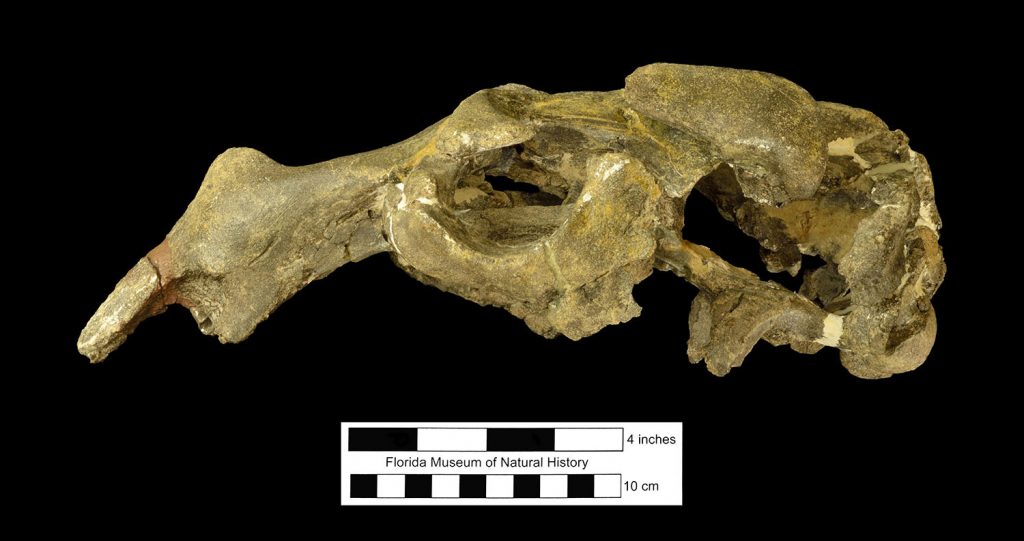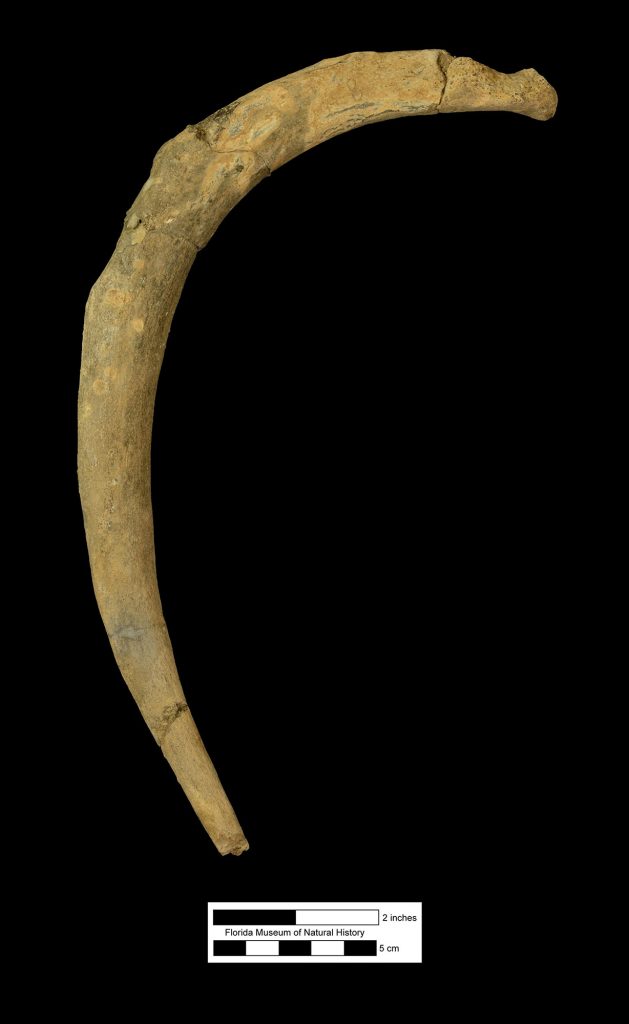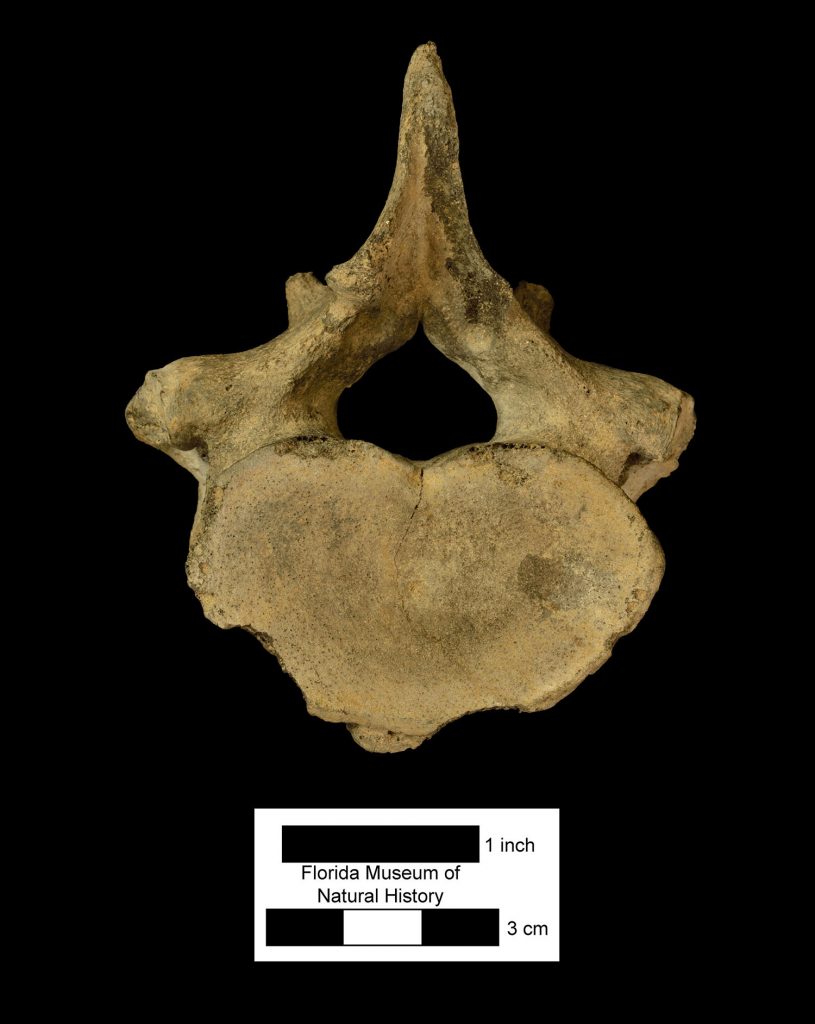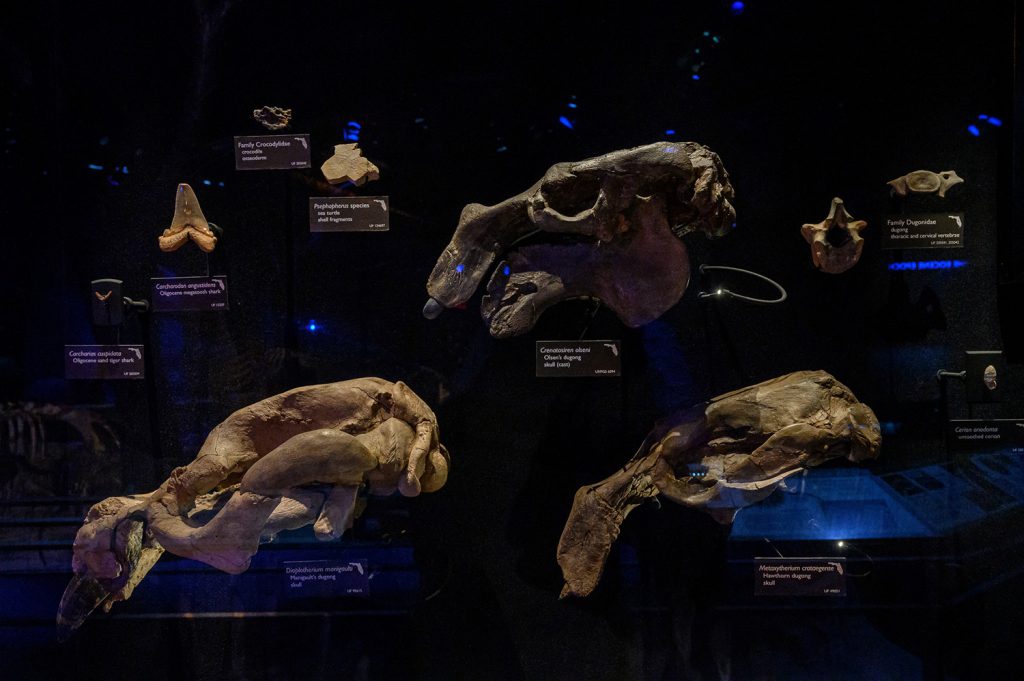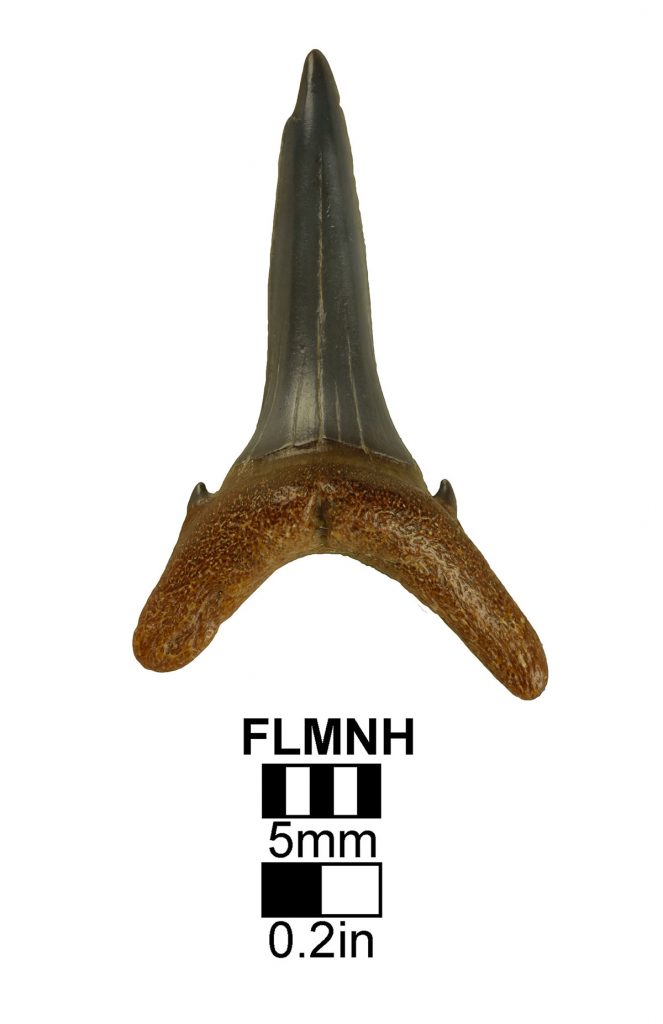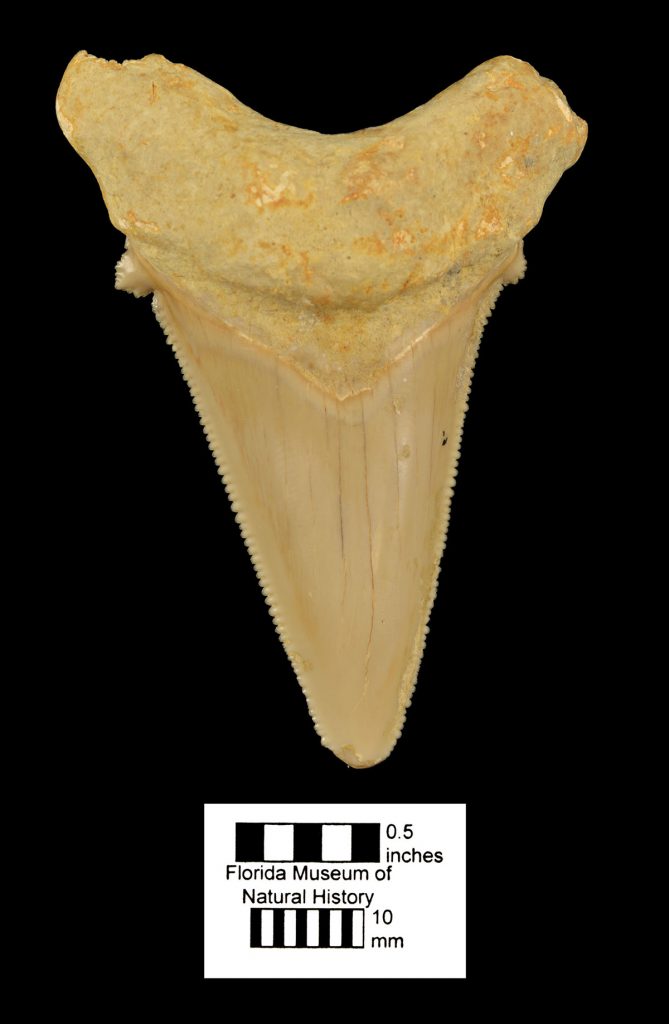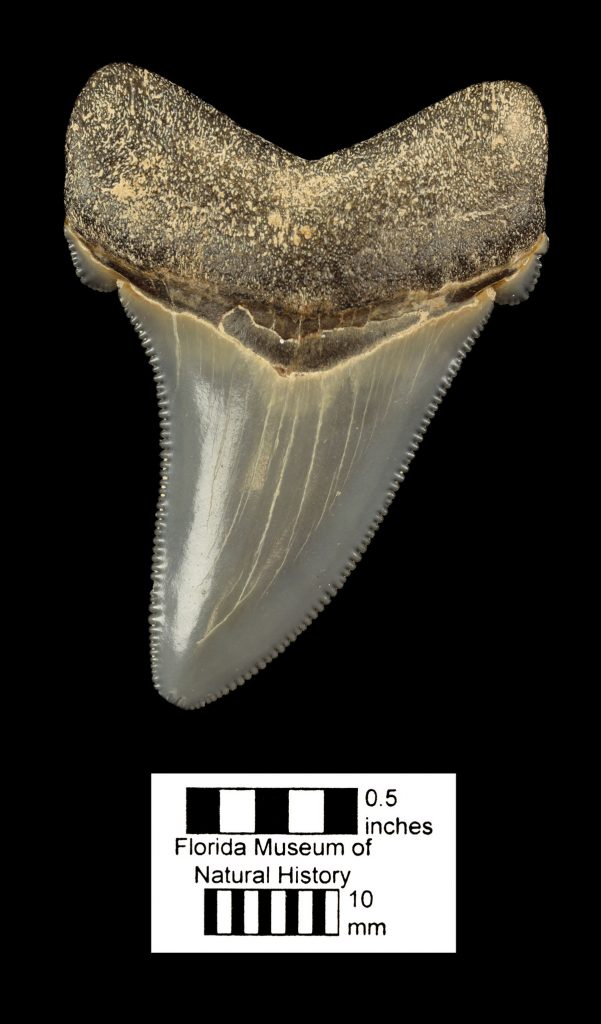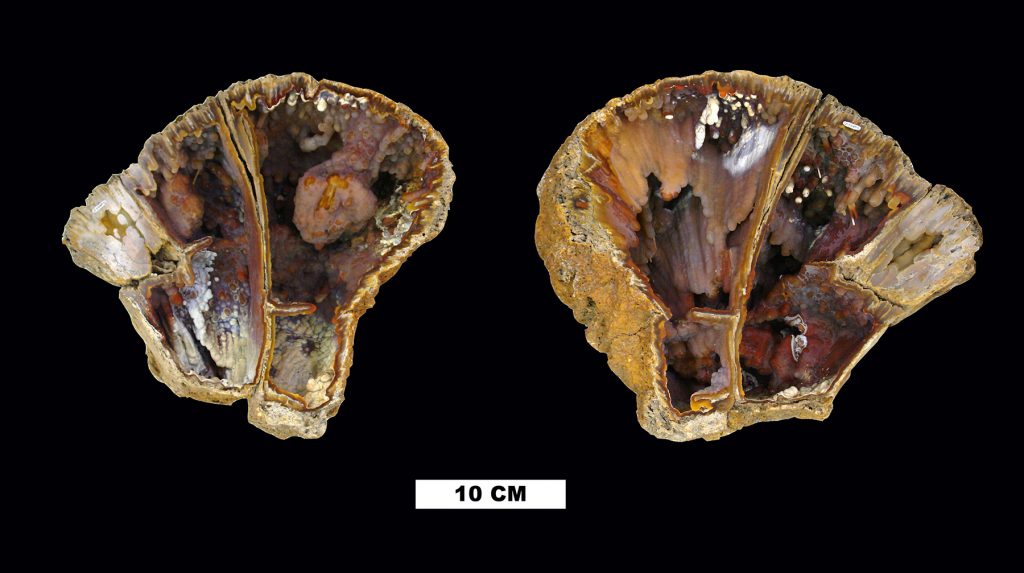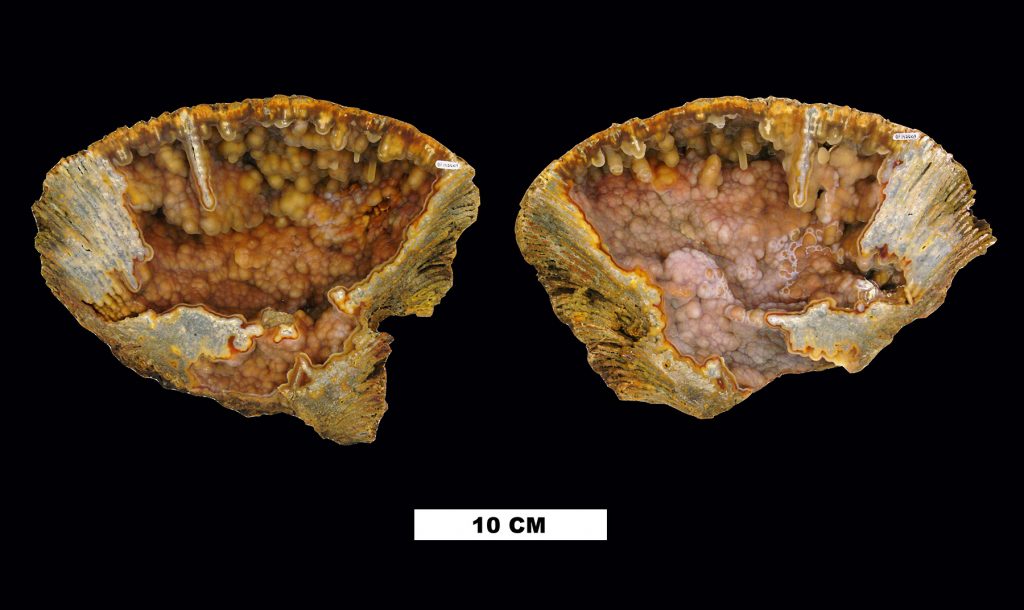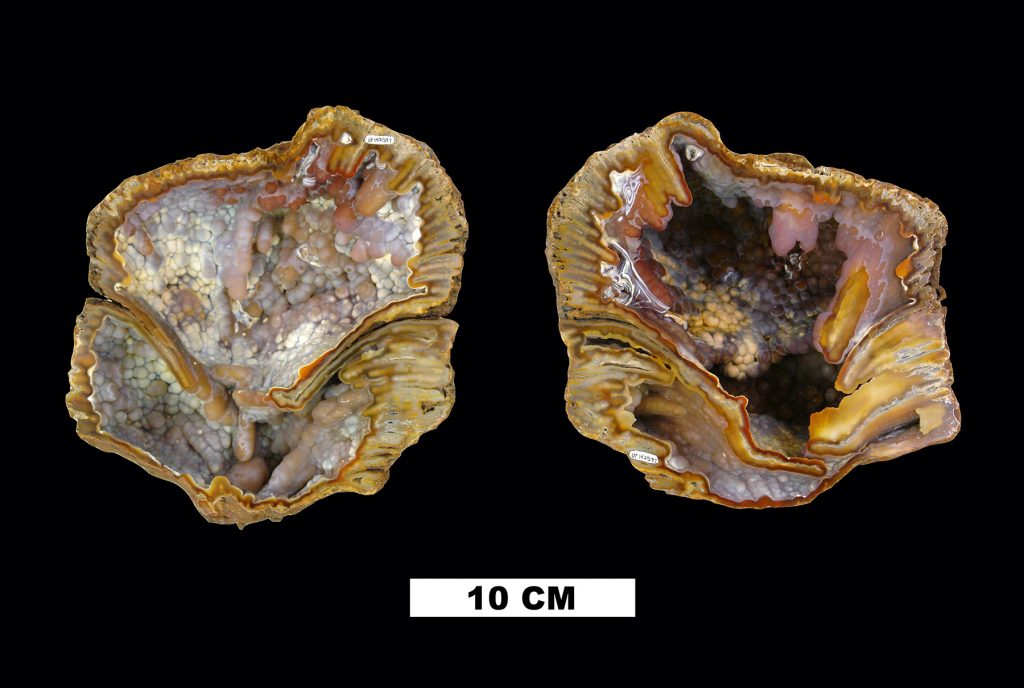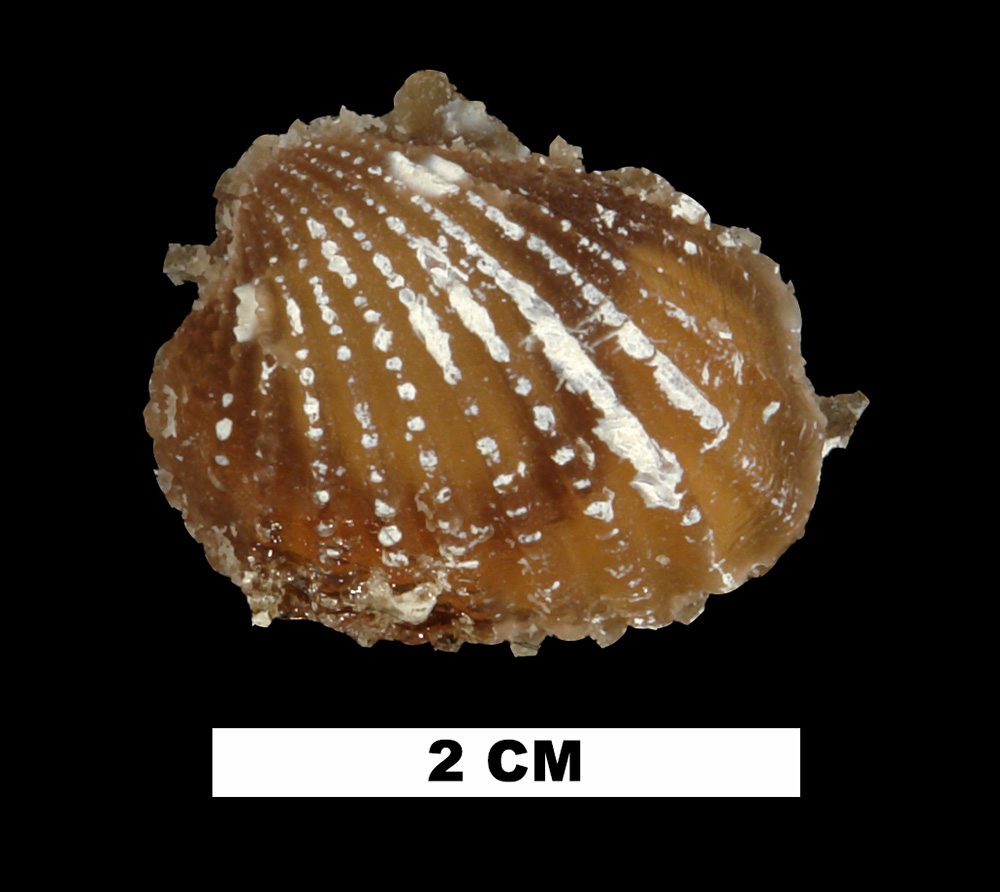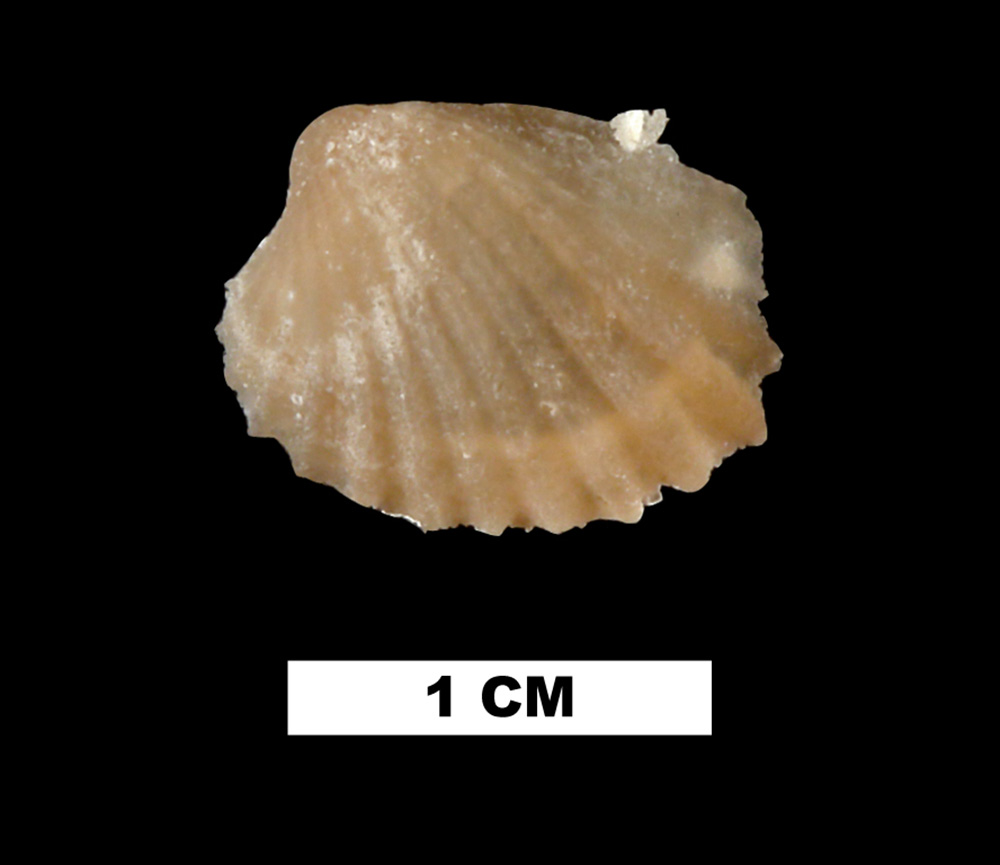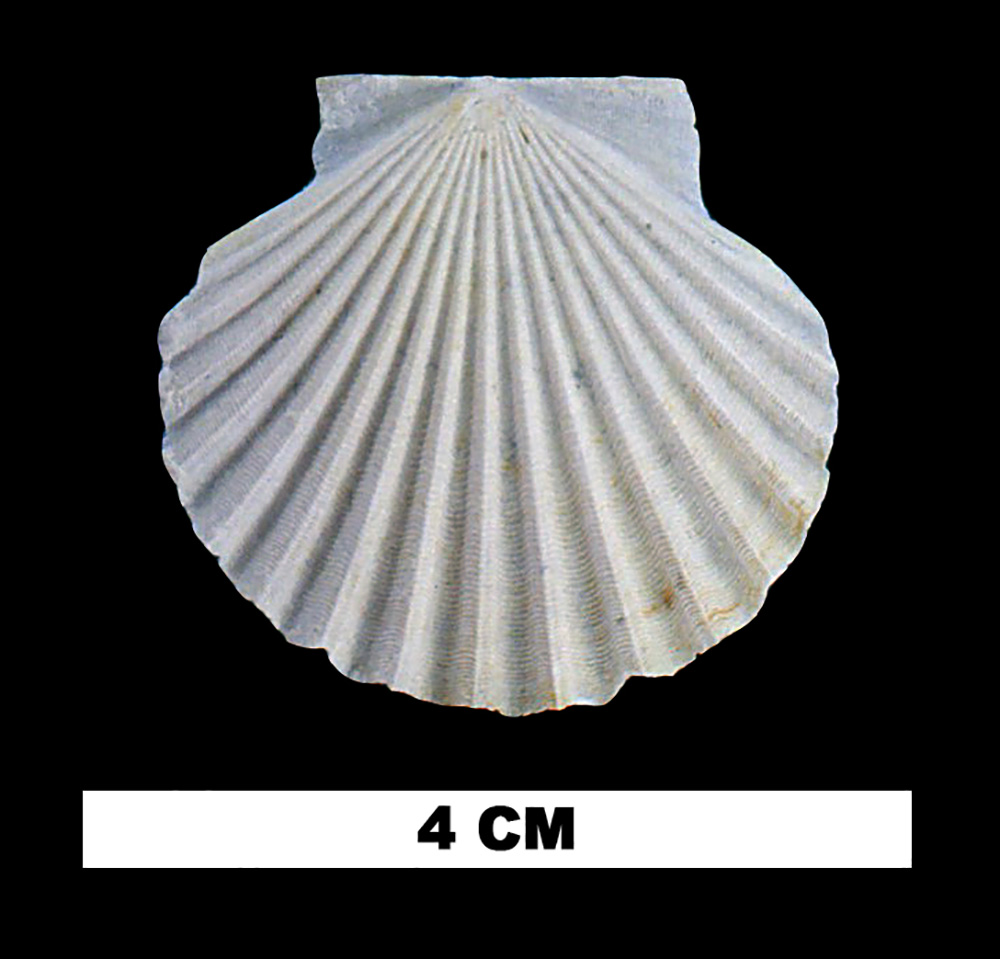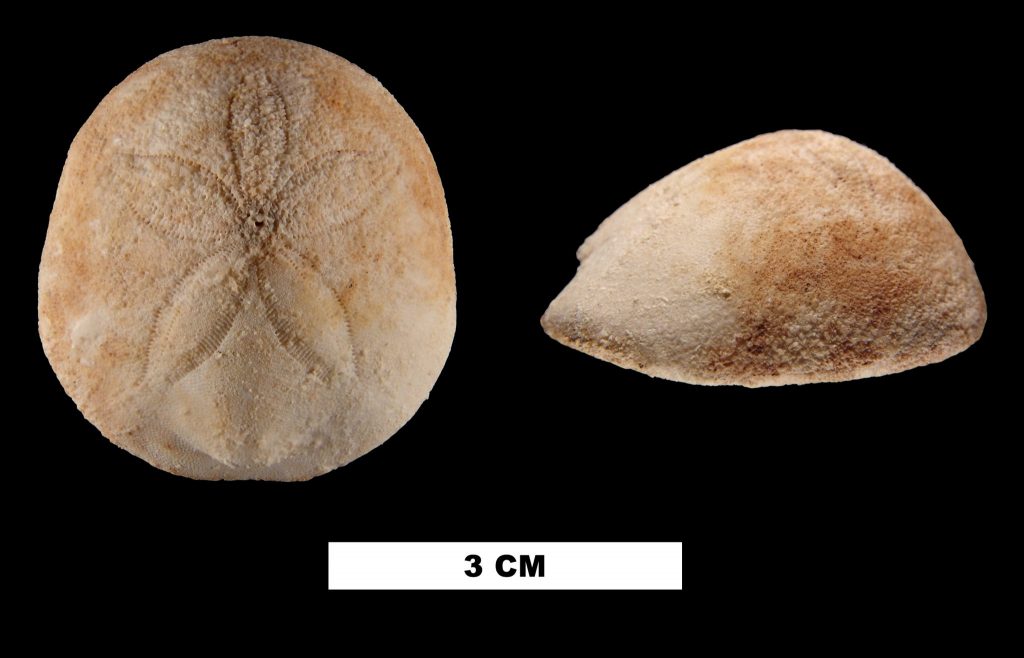Oligocene Epoch
34 million to 23 million years ago
During the Oligocene, global temperatures cooled, trapping water in the polar ice caps and lowering sea levels. This exposed some of the Florida peninsula for the first time. The rest of the state remained under water, but these shallow seas saw great changes with new species taking the place of animals that no longer thrived here. Explore some of the marine animals of Florida’s Oligocene:
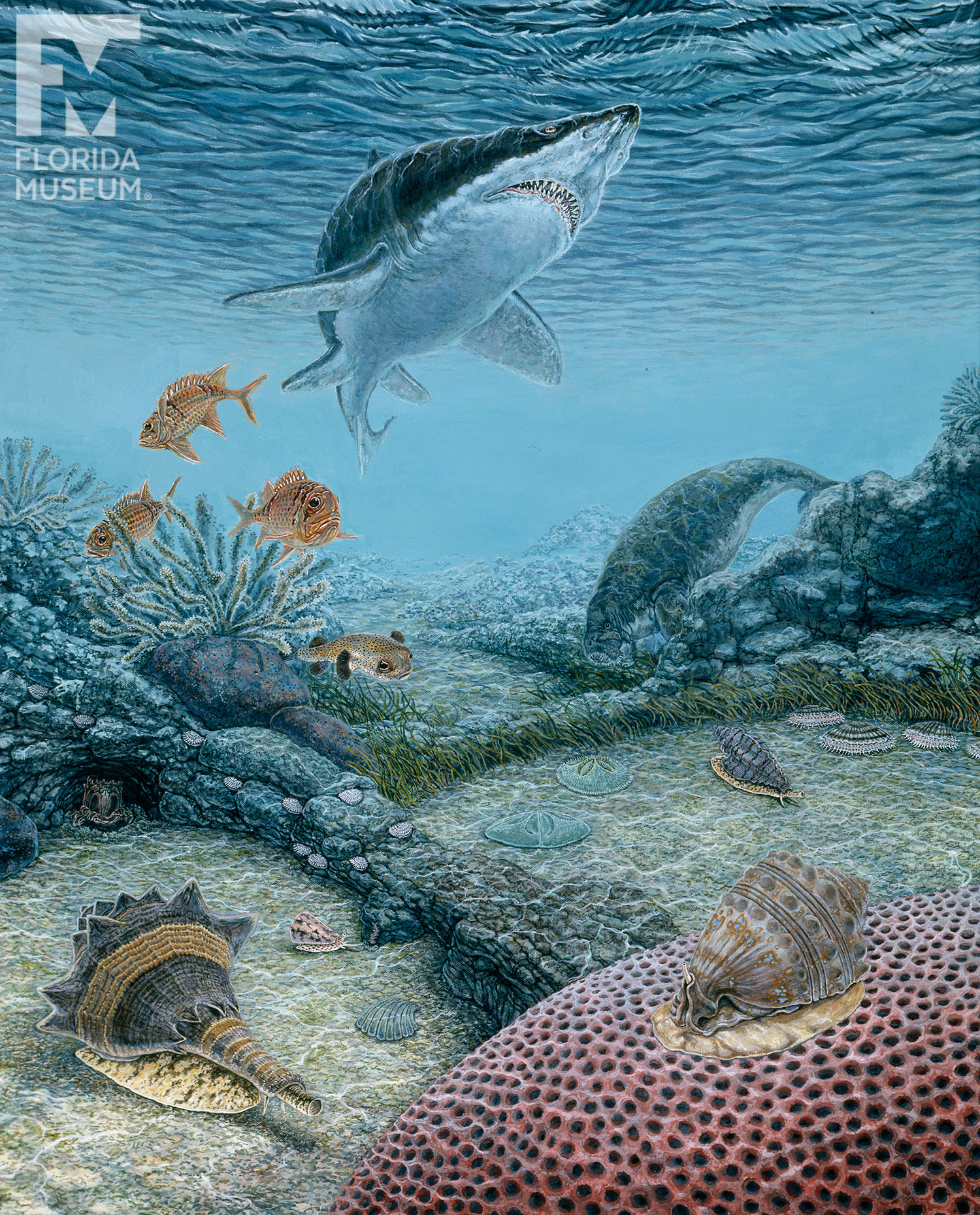
This painting was commissioned from artist David Miller for our Florida Fossils exhibit. Learn about the Oligocene animals represented:
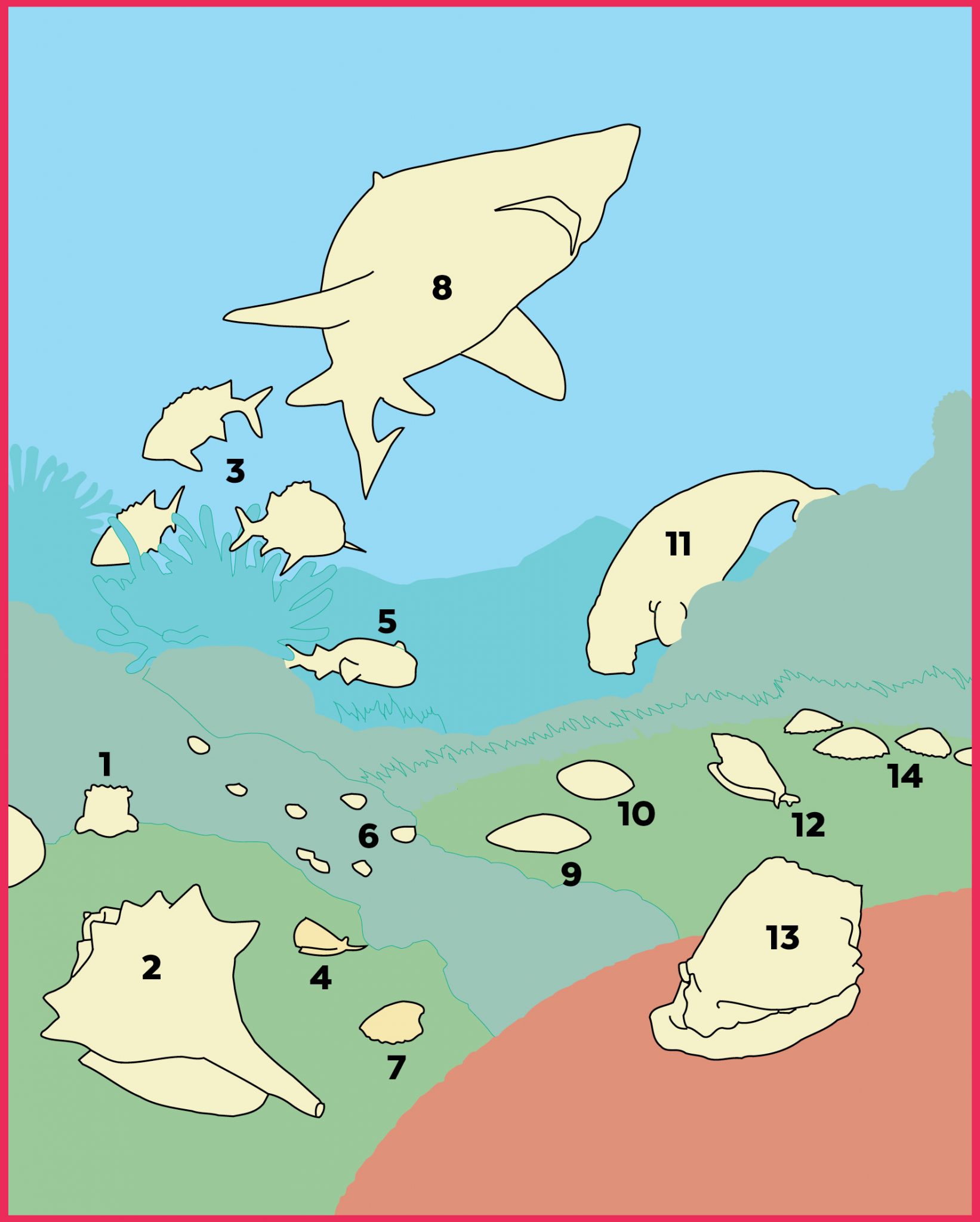
- Lophoranina species (frog crab)
- Melongena crassicornuta (crowned conch)
- Holocentrites ovalis (squirrelfish)
- Conus designatus (adorned cone)
- Diodon species (porcupinefish)
- Chama hillsboroughensis (Hillsborough jewelbox)
- Venericardia serricosta (saw-ribbed carditid)
- Araloselachus cuspidata (extinct sand tiger shark)
- Clypeaster rogersi (Rogers’ sand dollar)
- Rhyncholampas gouldii (Gould’s sea biscuit)
- Crenatosiren olseni (Olsen’s dugong)
- Timbellus propeposti (silica murex)
- Cassis flintensis (helmetshell)
- Pecten perplanus (very flat scallop)
Highlights
One of the most common type of mammal fossil found in Florida is of dugongs, also called sea cows. They are in the order Sirenia along with manatees, one of Florida’s most iconic animals. There were several species of dugongs living in the shallow coastal waters of our state, likely grazing on seagrass meadows. Examining the fossils of species like this Crenatosiren olseni can help paleontologists understand how this group evolved and the changes in Florida’s marine habitats during this time. Check out some of the species of dugong in our exhibit or read about fossil seagrass in our collection
Shark teeth are common fossil discoveries in Florida because sharks shed many teeth over their lives. Sharks thrived in Florida’s seas during the Oligocene, but their skeletons are cartilage, which doesn’t fossilize well. Researchers have been examining the evolution of this group of animals mostly from the teeth in the fossil record. Read about why shark teeth fossils are different colors
There were many interesting animals living in Florida’s waters during this time, from sand dollars to mollusks to porcupine fish. One of the more eye-catching fossils from these marine habitats is agatized coral, which is when a coral colony fossilizes and the remaining specimen looks like a geode. Learn more about agatized (fossil) coral
Explore more fossils
Note: Because our scientific knowledge is always expanding, some information like species names may have changed since the Florida Fossils exhibit was opened in 2004. The information on this page has been updated and may differ from the exhibit panel.
More
Florida Fossils: Evolution of Life and Land exhibit
Florida Vertebrate Fossils online resource
